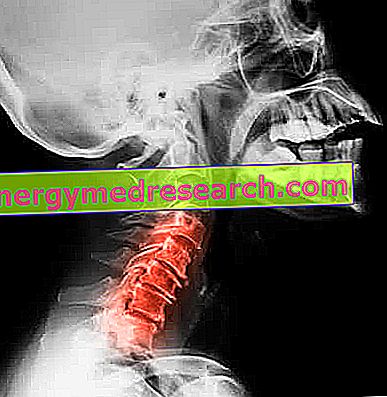Glucosinolates - also known as sulfur glucosides or thioglucosides - are a group of glycosides composed of a sugar part linked, via a sulfur atom, to the aglycone part, derived from amino acids such as methionine, phenylalanine, tyrosine and tryptophan.
As long as they remain sequestered in the sub-cellular compartments of plant tissues, glucosinolates are chemically stable and biologically inactive. Vice versa, the tissue damage caused by parasites or any other factor that leads to tissue laceration determines the contact of glucosides with endogenous enzymes called myrosinases. A process of enzymatic hydrolysis (mediated by myrosinases) of glucosinolates is thus activated, with rupture of the b-thioglucosidic bond and formation of unstable intermediaries that rearrange spontaneously in isothiocyanates, thiocyanates or nitriles.

Isothiocyanates are particularly known in the phytotherapy field for their tear, revulsive, rubefacient and blistering action; for this reason, some drugs particularly rich in glucosinolates, such as mustard, are traditionally used in the form of cataplasms and ointments against catarrhal affections, neuralgia and myalgia.
Isothiocyanates are also responsible for the pungent odor and the spicy taste of the drugs that contain them, especially the creucifere or brassicaceae ( turnip, cabbage, cabbage, horseradish, horseradish, Brussels sprouts, mustard, mustard ). If in nature glucosinolates discourage plant aggression by insects and herbivores, in humans they seem to exert the same activity against cancer cells, as they inhibit certain phases of carcinogenesis and induce apopotosis of numerous cell lines.
To date, more than 130 glucosinolates are known, the concentration of which is variable in various vegetables and in the same vegetable in relation to the age of the plant, soil fertility, possible diseases and the use of growth regulators.
Preserve the anticancer properties of foods rich in isothiocyanates
Among the most studied isothiocyanates for their anticancer properties we mention sulforaphane, which - concentrated mainly in broccoli sprouts - has been shown to be active against neuroblastoma (a characteristic embryonic malignant tumor of the child) and carcinomas of the breast, colon and prostate. Phenylisothiocyanate, originating from gluconasturzine, aromatic glucosinolate, has shown similar properties, especially in the prevention of lung cancer in smokers.
From indolic glucosinolates, such as those contained in mustard, unstable isothiocyanates are released and rapidly deposited, giving rise, among other things, to indole-3-carbinol, which according to several studies seems to possess marked anti-tumor properties.
Glucosinolates, their hydrolysis products and myrosinases are easily inactivated by heat (it is not by chance that the odor of cabbages becomes more intense the longer cooking is, indicative of the release of sulfur), which justifies the use of fresh food or subjected to sober steaming. As anticipated, the enzyme myrosinase is released by cellular vacuoles following wounds or shredding of the various parts of the plant (importance of correct chewing and avoiding excessive chopping of vegetables). We also remember the presence of myrosinase at the level of the intestinal microflora, which helps to make food-borne isothiocyanates even more available.
Isothiocyanates and thyroid
The high concentration of isothiocyanates in some vegetables has earned it the status of "gozzigeni" foods; in fact, these substances inhibit the incorporation of iodine and the formation of thyroxine, slowing down the thyroid function. However, if the dietary intake of iodine is sufficient, there is no reason to exclude these foods from the diet, the consumption of which should be encouraged. In fact, due to the presence of certain glucosinolates, broccoli and cabbage fall fully among functional foods, considered useful in the prevention of some forms of cancer, such as bladder or breast cancer, based on the correlation found in recent studies between consumption of Brassicacae and reduced risk of cancer.
Spicy pasta rings with clams and Roman cabbage - Alice's recipes
If it is true that the "cancer hates cabbages", even for many people the relationship with this vegetable is not exactly idyllic. To make you appreciate this precious food it is important to find the right recipe. Alice, the official MypersonaltrainerTv personalcooker, guides you step by step in the preparation of a tasty first course rich in antioxidants and omega-3 fats.
Spicy pasta rings with clams and romanesco cabbage
X Problems with video playback? Reload from YouTube Go to Video Page Go to Video Recipes Section Watch the video on youtube



